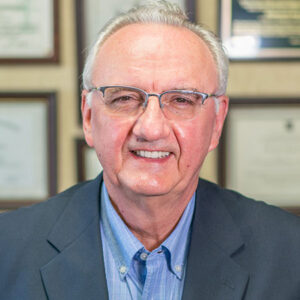Mladen Kezunovic
Home / Mladen Kezunovic
Presentations:
Impact of Distributed Energy Resources on the Wholesale and Retail Markets
Distributed Energy Resources (DERs) are being deployed at the customer sites at large scale. This creates two major issues a) for the utilities and electricity market operators on how to control them for the benefit of the grid, and b) for the industry and customers alike on how they may contribute to bringing the grid to the net-zero carbon goals in the future. In this lecture we explore the nature of DERs, and their flexibility, when used in the role of prosumers, also often called virtual power plants. We illustrate the capability of such a flexible load to participate in the wholesale market (WSM) and Retail Market (RTM). We explore the practical aspects of such application from technical, regulatory, and social aspects focusing on the impacts on grid performance improvements and societal benefits. We illustrate our points using a specific form of such a flexible DER that we named a nano-Grid (n-Grid), which consist of the solar PV generation, and stationary and mobile (EV) Battery Energy Storage Systems (BESS). We discuss the role of the n-Grid in supporting aggregators in procuring the Ancillary Service Products (ASP), and distribution utilities in providing improved services for the grid operation and consumers. The talk ends with future projections and expected technology advancements.
The Use of Big Data, Machine Learning and Artificial Intelligence in Managing Electric Grid Emergencies
The topic of Big Data and associated analytics surfaced as the huge amounts of data became available through the space exploration, weather forecasting and medical biogenetic investigations. Social media and outlets such as Google, Facebook, Amazon and others are handling data sets reaching petabytes. The power systems are now experiencing significantly enlarged amount of data obtained through field measurements and external sources such as variety of weather data. This talk focuses on the role of Big Data analytics in managing and controlling future power system operation under uncertainty and variability of renewable energy resources by harvesting flexibility of Distributed Energy Resources (DERs). The concept of State of Risk prediction, and associated optimization techniques to minimize or eliminate the outage impacts through appropriate risk management and mitigation measures using DERs is explained. Several real-life examples how the Big Data analytics are recently used to successful predict and mitigate distribution system faults, and how to use PV generation, and mobile (electrical vehicles) and stationary battery energy storage system (BESS) to manage outages are presented. Future trends are also discussed.
Synchrophasor Technology: Benefits and Pitfalls
Synchrophasor technology was introduced over 30 years ago and only recently resulted in large scale deployments made possible in the USA largely through the American Recovery and Reinvestment Act of 2009. This technology offers unique measurement capabilities, and several monitoring, control and protection applications were introduce to take advantage of this technology. The benefits are foreseen in many areas ranging from situational awareness and stability control to system integrity protection (SIPS) schemes. This talk discusses how this technology works, when it may be advantageous to use it, what are perceived benefits, why it still needs further development and where the pitfalls are. With close to 5000 phasor measurement units installed in the US grid, over the years and with over $1billion in investments already made, the projection what the next steps are is made. The trend of this technology being widely used not only in the transmission grid but also in distribution systems and customer applications is explored. The talk ends with discussion of the testing and certification process that needs to be established for this technology to be a viable solution going forward. We will also reflect on the use of Machine Learning and Artificial Intelligence for developing software for automated event detection and classification using PMU data.
© Copyright 2023 IEEE — All rights reserved. A not-for-profit organization, IEEE is the world’s largest technical professional organization dedicated to advancing technology for the benefit of humanity.


